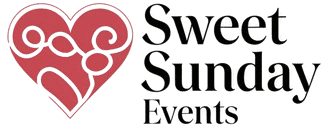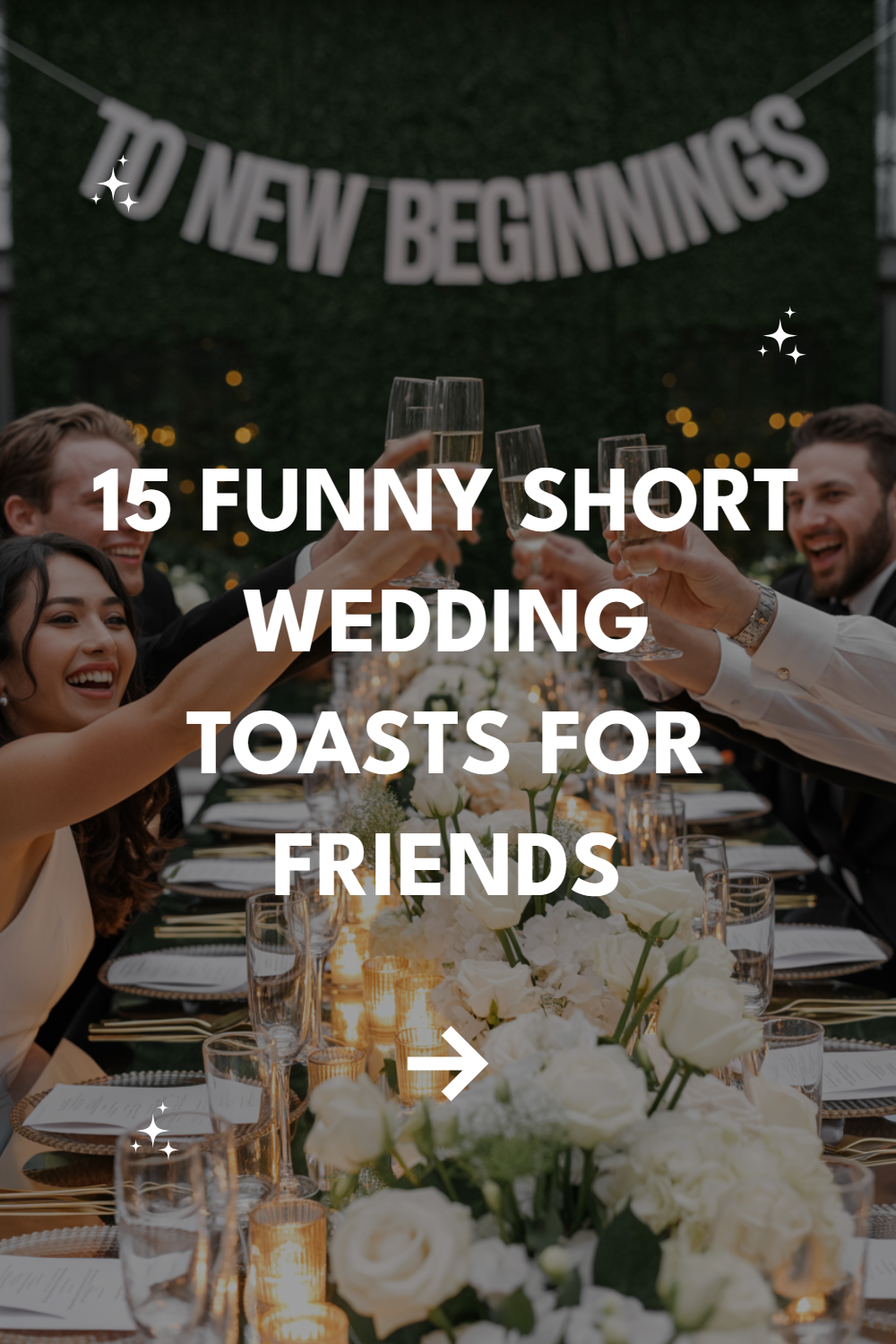Standing up to give a wedding toast for your friend can feel like walking a tightrope between heartfelt and hilarious.
You want to make everyone laugh without embarrassing the couple or revealing that story about the Vegas weekend that shall never be mentioned again.
The secret lies in finding that sweet spot where humor meets genuine affection, creating a moment that celebrates your friendship while keeping things wedding-appropriate.
1. The “How We Met” Classic
“I’ve known [Bride’s name] since college, back when she thought ramen noodles were a food group and believed that doing laundry meant spraying Febreze on yesterday’s clothes. Now look at her—she’s got someone else to do her laundry!”
This type of toast works because it gently pokes fun at shared memories while showing growth. Everyone can relate to those messy early adult years, and it highlights how far your friend has come.
The beauty of referencing your friendship’s origin story is that it gives context to your bond. Just keep the embarrassing details light and focus on quirks rather than actual disasters.
2. The Backhanded Compliment Special
“When [Groom’s name] first started dating [Bride’s name], I thought, ‘Finally, someone with lower standards than me!’ But seriously, they’re perfect for each other because they both laugh at each other’s terrible jokes.”
Self-deprecating humor mixed with a gentle roast of the couple creates the perfect balance. You’re not actually insulting anyone—you’re creating a moment of shared laughter.
The key here is delivery. Pause after the first line for the laugh, then immediately pivot to the genuine sentiment. Timing makes all the difference between funny and awkward.
3. The Prediction Gone Wrong
“Five years ago, I bet [Bride’s name] would end up with someone tall, dark, and handsome. Well, [Groom’s name], you’re tall. But in all seriousness, you proved that love isn’t about checking boxes—it’s about finding someone who makes you laugh until your sides hurt.”
This format lets you playfully tease the groom while ultimately celebrating what makes their relationship special. It subverts expectations in a harmless way.
The joke lands because it acknowledges that real compatibility goes deeper than surface qualities. Plus, it shows you’ve been paying attention to their relationship dynamics.
4. The Reverse Psychology Toast
“I have to admit, I tried to talk [Bride’s name] out of this marriage. I told her, ‘[Groom’s name] leaves dishes in the sink, he sings off-key in the shower, and he thinks matching socks are optional.’ Her response? ‘That’s exactly why I love him.’ I knew then that this was real love.”
Playing the role of the initially skeptical friend adds narrative tension to your toast. It creates a mini-story arc that resolves with your blessing.
This structure works particularly well when the couple has obvious but endearing differences. It celebrates their quirks rather than trying to pretend they’re perfect.
5. The Translation Toast
“For those who don’t speak [Bride’s name], let me translate what she really means when she says [Groom’s name] is ‘handy around the house.’ Last week, he successfully changed a lightbulb without calling an electrician. The week before, he assembled IKEA furniture with only three pieces left over. Clearly, we’re dealing with a renaissance man here.”
Everyone loves insider knowledge about the couple’s dynamic. This type of toast works because it reveals the sweet reality behind polished social media posts.
The humor comes from the gap between expectation and reality, but it’s delivered with obvious affection. You’re not actually criticizing anyone’s DIY skills—you’re celebrating their willingness to try.
6. The Time Traveler’s Perspective
“If you told me ten years ago that [Bride’s name] would marry someone who voluntarily watches romantic comedies and remembers anniversaries, I would have checked you into a mental health facility. Yet here we are, and [Groom’s name] not only does both but actually enjoys them. Miracles do happen, people.”
This format highlights how the groom has exceeded everyone’s expectations in the best possible way. It’s a compliment disguised as surprise.
The joke acknowledges that finding someone who genuinely shares your interests (or at least pretends to very convincingly) is indeed miraculous. It’s relatable without being cynical.
7. The Scientific Analysis
“After careful observation, I’ve determined that [Bride’s name] and [Groom’s name] are perfect for each other because they’re both weird in exactly complementary ways. She organizes her bookshelf by color, he organizes his playlist by mood. She talks to plants, he talks to his car. It’s like watching two puzzle pieces that shouldn’t fit but somehow create the most beautiful picture.”
Framing their quirks as scientific data adds a playful analytical element to your toast. It suggests you’ve been studying their relationship like a researcher.
This type of toast works because it celebrates individuality within partnership. You’re highlighting how their differences create harmony rather than conflict.
8. The Job Interview Toast
“When [Groom’s name] asked for my blessing to marry [Bride’s name], I put him through a rigorous interview process. Question one: ‘Can you tolerate her singing Disney songs at 7 AM?’ Check. Question two: ‘Will you pretend to enjoy her experimental cooking?’ Double check. Question three: ‘Can you handle her family’s game night competitiveness?’ He didn’t just say yes—he bought his own dice. That’s when I knew he was serious.”
Creating a narrative around giving your blessing adds structure and builds to a satisfying conclusion. It positions you as the protective friend who’s been won over.
The specific details make this toast feel personal and authentic. Generic questions won’t land the same way as references to actual habits and family dynamics.
9. The Evolution Toast
“I’ve watched [Bride’s name] date a lot of frogs over the years. There was the guy who collected vintage lunch boxes, the one who spoke only in movie quotes, and let’s not forget the amateur magician phase. But [Groom’s name] isn’t a prince—he’s something better. He’s the guy who laughs at her jokes, brings her coffee without being asked, and has never once pulled a rabbit out of a hat.”
Referencing past dating mishaps (gently) makes the current relationship shine brighter by comparison. It shows a journey rather than just a destination.
The key is keeping past relationships anonymous and focusing on silly rather than serious flaws. You want laughs, not uncomfortable silence from ex-boyfriends in the audience.
10. The Witness Protection Toast
“As [Bride’s name]’s oldest friend, I’ve been sworn to secrecy about many things. I can’t tell you about the great hair dye disaster of 2018, the karaoke incident that shall not be named, or why she’s banned from that pottery class. But I can tell you that [Groom’s name] knows all these stories and loves her anyway. That’s not just love—that’s commitment.”
Alluding to embarrassing stories without actually telling them creates intrigue while respecting boundaries. It suggests deep friendship without oversharing.
This format works because it implies the groom has seen your friend at her worst and chosen to stick around. That’s the foundation of a solid marriage.
11. The GPS Toast
“[Bride’s name] has always had a terrible sense of direction. She once got lost in her own neighborhood and needed GPS to find the bathroom at her favorite restaurant. But somehow, she found her way to [Groom’s name]. I guess when it comes to love, she finally knew exactly where she was going.”
Using a character flaw as a metaphor for finding love creates a nice parallel structure. It transforms a weakness into part of a romantic narrative.
The humor comes from the contrast between being directionally challenged and finding “the one.” It’s sweet without being saccharine.
12. The Upgrade Toast
“Before [Groom’s name], [Bride’s name]’s idea of a romantic dinner was eating takeout while binge-watching Netflix in her pajamas. Now she still eats takeout while binge-watching Netflix in her pajamas—but she has someone to share the remote with. Some people call that settling. I call it finding your perfect match.”
This toast celebrates the comfort and authenticity of their relationship rather than pretending it’s all candlelit dinners and grand gestures. Real love is often wonderfully ordinary.
The punchline works because it reframes low-key togetherness as relationship goals rather than laziness. Sometimes the best partnerships are built on shared appreciation for sweatpants and pizza.
13. The Competitive Analysis
“I always thought I was [Bride’s name]’s best friend until [Groom’s name] came along. Suddenly, I wasn’t getting the first phone call about good news, bad news, or random thoughts about whether penguins have knees. I’ll admit, I was jealous—until I realized that’s exactly what marriage should be. [Groom’s name], congratulations on becoming her new best friend, favorite person, and primary audience for penguin-related questions.”
Acknowledging the shift in friendship dynamics shows maturity and understanding of how relationships evolve. It’s bittersweet but ultimately celebratory.
This type of toast works because it recognizes that healthy marriages do change friendships, but in positive ways. You’re passing the torch rather than losing your friend.
14. The Warning Label Toast
“[Groom’s name], I feel obligated to warn you about what you’re getting into. [Bride’s name] will steal your hoodies, critique your driving, and insist on taking seventeen photos of every meal. She’ll make you watch reality TV shows about people buying houses they can’t afford, and she’ll cry at every commercial with a dog in it. Consider yourself warned—and incredibly lucky.”
Framing endearing quirks as “warnings” creates humor through exaggeration. You’re actually listing reasons why she’s loveable while pretending they’re problematic.
The structure builds anticipation for actual problems but delivers sweetness instead. It’s a bait-and-switch that leaves everyone smiling.
15. The Full Circle Toast
“When we were kids, [Bride’s name] used to plan elaborate weddings for her dolls. She’d spend hours arranging the perfect ceremony, complete with flower petals and a cake made of Play-Doh. Today, watching her marry [Groom’s name], I realize some dreams are worth the wait. The only difference is now the cake is real, the flowers are fresh, and the groom actually showed up. Though honestly, Ken was never this good-looking anyway.”
Connecting childhood dreams to present reality creates a satisfying narrative arc. It shows how some core desires remain constant even as we grow up.
The comparison to childhood play adds whimsy while acknowledging that this adult version is infinitely better. It’s nostalgic without being sentimental.
Delivering Your Toast Like a Pro
Practice your timing because comedy is all about rhythm. Record yourself or practice in front of a mirror to nail the pauses and emphasis that make jokes land.
Keep a backup plan ready in case your opening joke falls flat. Have a more straightforward, heartfelt line prepared so you can pivot gracefully if needed.
Making It Memorable Without Going Viral
The best wedding toasts are funny enough to make people laugh but not so outrageous that they overshadow the couple. Your goal is to enhance their moment, not steal it.
Test your material on someone who knows the couple but wasn’t involved in writing the toast. If they wince at any part, consider revising those sections before the big day.


